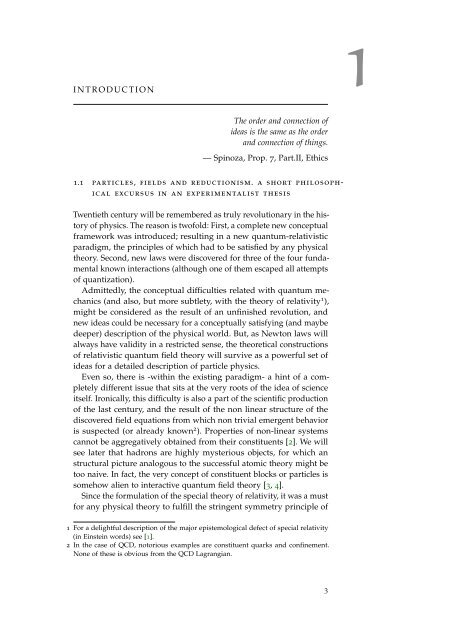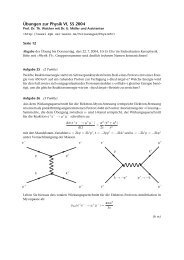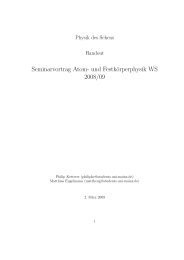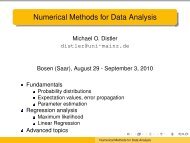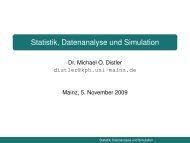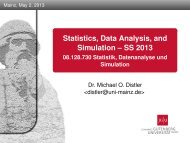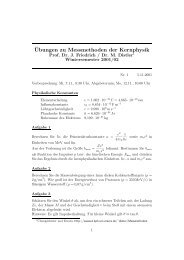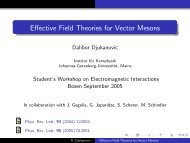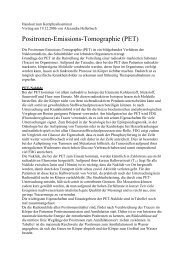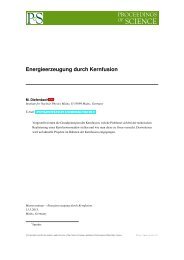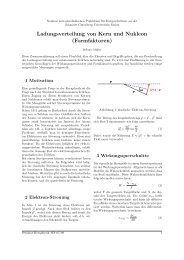A Classic Thesis Style - Johannes Gutenberg-Universität Mainz
A Classic Thesis Style - Johannes Gutenberg-Universität Mainz
A Classic Thesis Style - Johannes Gutenberg-Universität Mainz
You also want an ePaper? Increase the reach of your titles
YUMPU automatically turns print PDFs into web optimized ePapers that Google loves.
I N T R O D U C T I O N<br />
The order and connection of<br />
ideas is the same as the order<br />
and connection of things.<br />
— Spinoza, Prop. 7, Part.II, Ethics<br />
1.1 particles, fields and reductionism. a short philosophical<br />
excursus in an experimentalist thesis<br />
Twentieth century will be remembered as truly revolutionary in the history<br />
of physics. The reason is twofold: First, a complete new conceptual<br />
framework was introduced; resulting in a new quantum-relativistic<br />
paradigm, the principles of which had to be satisfied by any physical<br />
theory. Second, new laws were discovered for three of the four fundamental<br />
known interactions (although one of them escaped all attempts<br />
of quantization).<br />
Admittedly, the conceptual difficulties related with quantum mechanics<br />
(and also, but more subtlety, with the theory of relativity 1 ),<br />
might be considered as the result of an unfinished revolution, and<br />
new ideas could be necessary for a conceptually satisfying (and maybe<br />
deeper) description of the physical world. But, as Newton laws will<br />
always have validity in a restricted sense, the theoretical constructions<br />
of relativistic quantum field theory will survive as a powerful set of<br />
ideas for a detailed description of particle physics.<br />
Even so, there is -within the existing paradigm- a hint of a completely<br />
different issue that sits at the very roots of the idea of science<br />
itself. Ironically, this difficulty is also a part of the scientific production<br />
of the last century, and the result of the non linear structure of the<br />
discovered field equations from which non trivial emergent behavior<br />
is suspected (or already known 2 ). Properties of non-linear systems<br />
cannot be aggregatively obtained from their constituents [2]. We will<br />
see later that hadrons are highly mysterious objects, for which an<br />
structural picture analogous to the successful atomic theory might be<br />
too naive. In fact, the very concept of constituent blocks or particles is<br />
somehow alien to interactive quantum field theory [3, 4].<br />
Since the formulation of the special theory of relativity, it was a must<br />
for any physical theory to fulfill the stringent symmetry principle of<br />
1 For a delightful description of the major epistemological defect of special relativity<br />
(in Einstein words) see [1].<br />
2 In the case of QCD, notorious examples are constituent quarks and confinement.<br />
None of these is obvious from the QCD Lagrangian.<br />
3<br />
1


